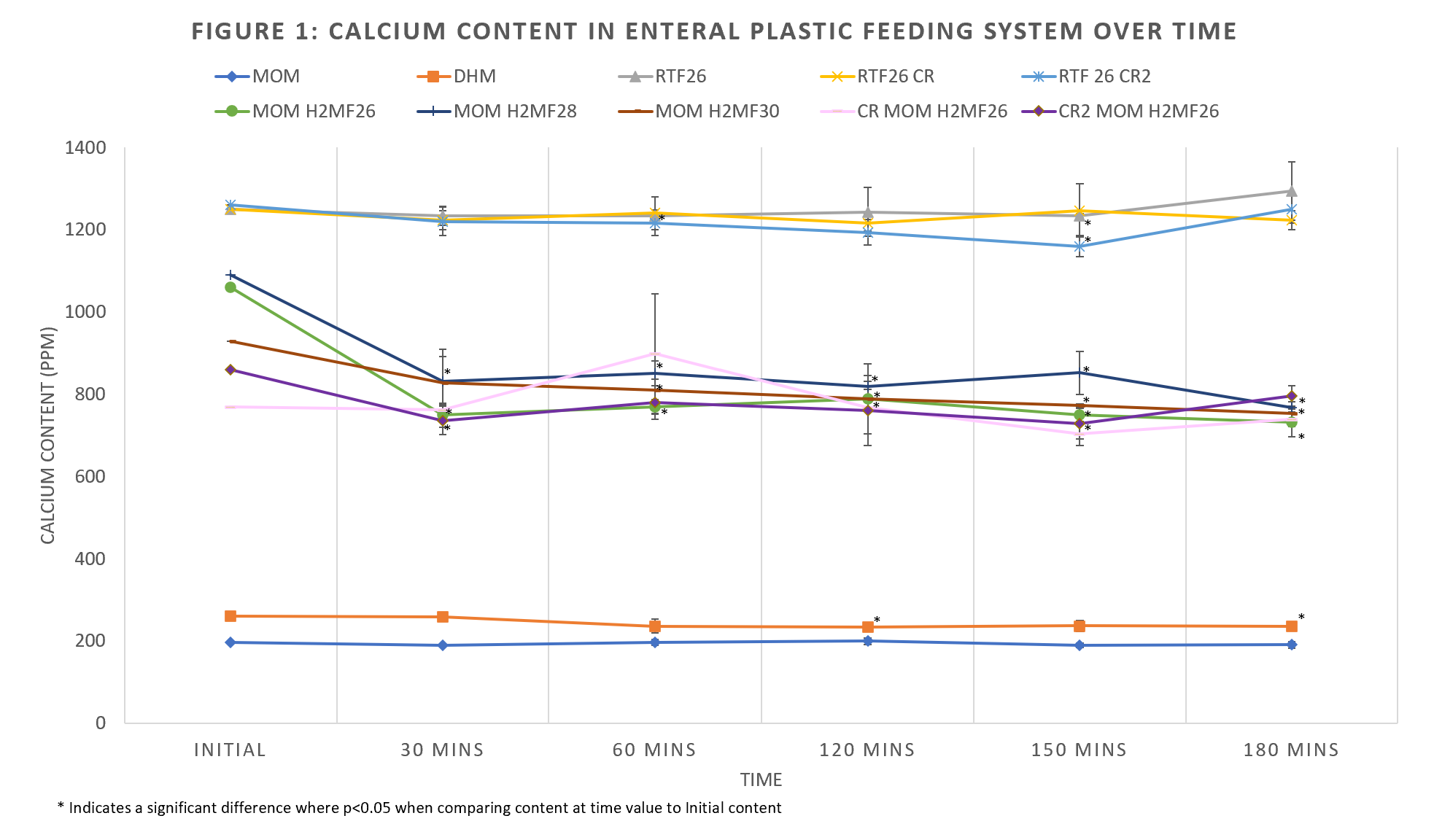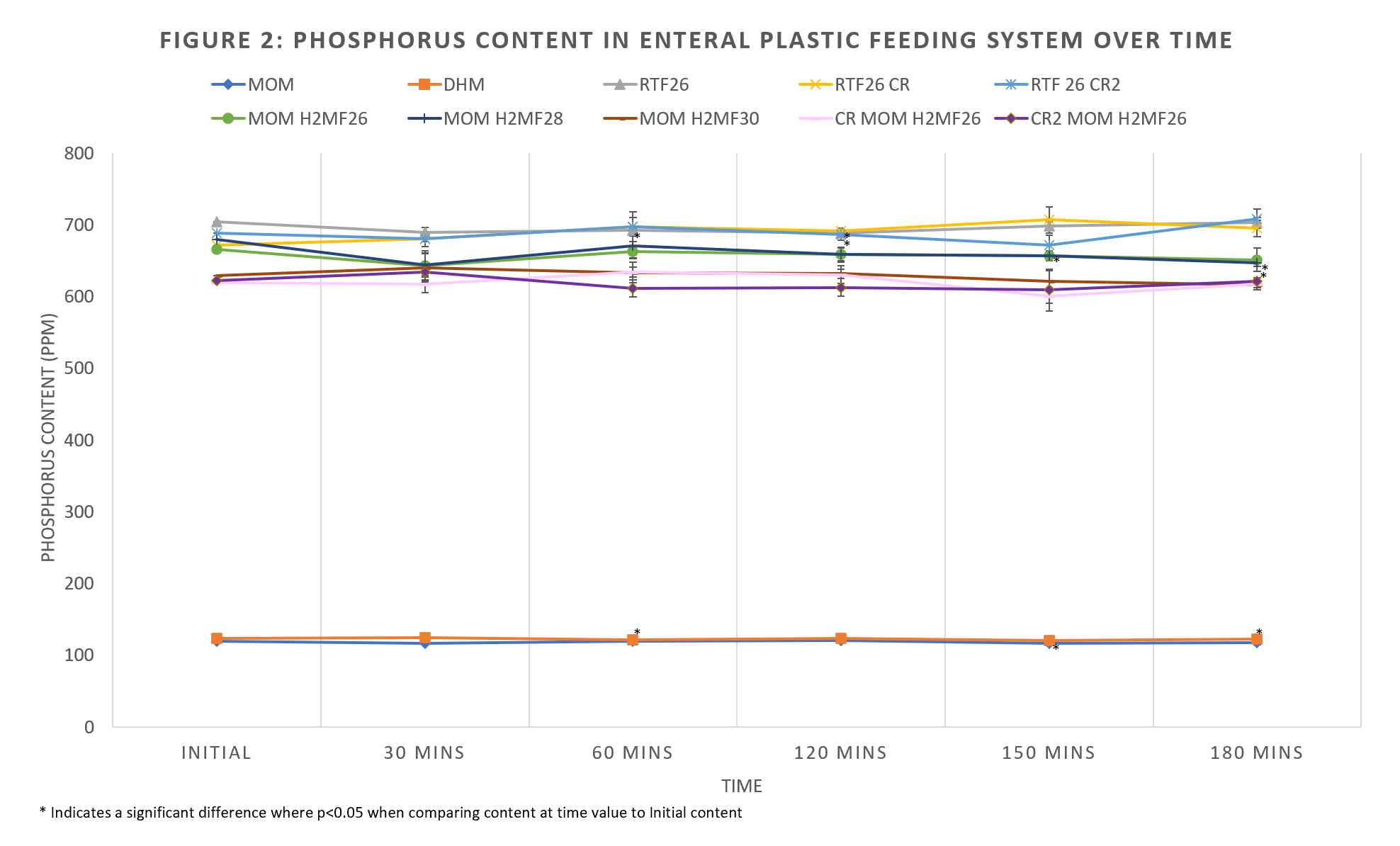Neonatology
Session: Neonatal General 4: Nutrition, Feeding, and Growth
96 - Calcium and Phosphorus Losses After Infusion of Human Milk Based Feedings in a Plastic Feeding System
Friday, May 3, 2024
5:15 PM - 7:15 PM ET
Poster Number: 96
Publication Number: 96.37
Publication Number: 96.37
.jpg)
Victoria E. Hamilton, MD (she/her/hers)
Neonatal Perinatal Medicine Fellow
Los Angeles General Medical Center
Los Angeles, California, United States
Presenting Author(s)
Background: Polyurethane plastic tubes used to feed preterm infants have lipophilic properties that bind fat and fat-complexed nutrients such as calcium (Ca) and phosphorus (Phos), decreasing the delivery of these nutrients in human milk (HM) and leading to greater nutritional losses with longer duration of feedings.
Objective: The purpose of this study was to quantify Ca and Phos loss in different HM fortification strategies at different simulated feeding durations using polyurethane plastic tubes.
Design/Methods: Fortified and unfortified HM feedings were studied for fat loss using an in vitro model of simulated feedings. Unfortified HM included Mom’s own milk (MOM) and donor human milk (DHM). Fortified HM included MOM fortified to 26 kcal/oz (MOM H2MF26) and Ready to Feed 26 kcal/oz (RTF26). To increase the caloric content of fortified HM, cream (Prolact CR) was mixed to final caloric content of 28 kcal/oz (MOM H2MF28, RTF26 CR) and 30 kcal/oz (MOM H2MF30, RTF 26 CR2). To study another method of cream delivery apart from mixing, Prolact CR also was also administered first as bolus in the feeding system using a 3 ml syringe before infusion of fortified milk (CR MOM H2MF26 and CR2 MOM H2MF26). 45 ml of milk feedings were infused in triplicate through a polyurethane plastic via an infusion pump for 30, 60, 120, or 180 minutes with new tubing for each run. Each type of milk was mixed per label instructions in a large glass container to minimize nutrient loss and to standardize nutrient content of each sample. After infusion, the tubing was flushed with 5 ml of air. All milks were analyzed for Ca and Phos content before and after runs by ICP emission spectrometry. Data was analyzed using Paired T-test.
Results: There were 160 samples analyzed for Ca and Phos. All fortified HM had higher Ca content than unfortified HM. MOM had no significant Ca loss (Figure 1). RTF products had the highest Ca content of all the fortified HM with minimal Ca loss overtime. There was significant Ca loss from initial to all time durations in MOM H2MF26, MOM H2MF28, and MOM H2MF30 (Table 1). CR MOM H2MF26 resulted in significant Ca loss at 30 min and 180 mins while CR2 MOM H2MF26 was found to be significant after 60 mins in duration. There was no significant loss of Phos observed with the different types of milk over time (Figure 2).
Conclusion(s): Ca loss was higher in HM with higher fat loss. Phos loss was not associated with any type of HM or run duration. RTF 26 products with and without supplemental cream had minimal Ca loss over time.


.png)
